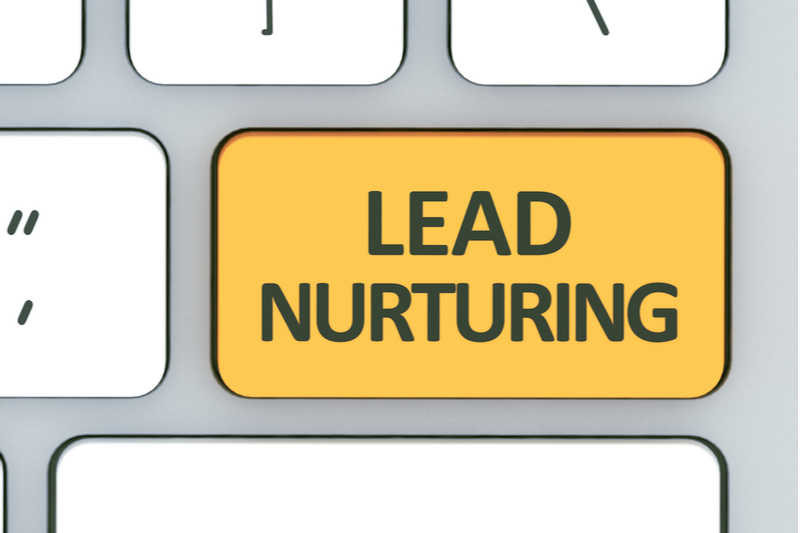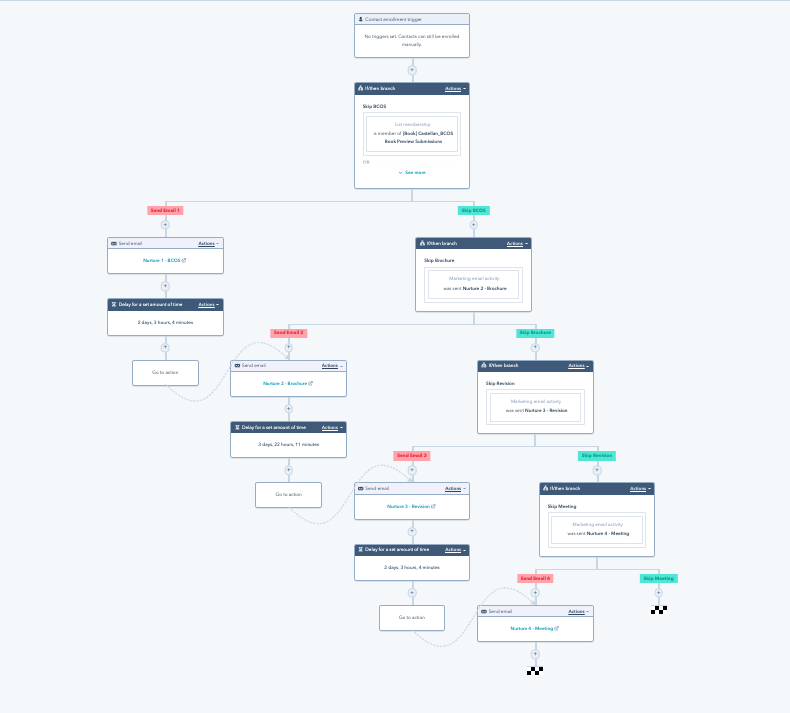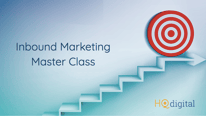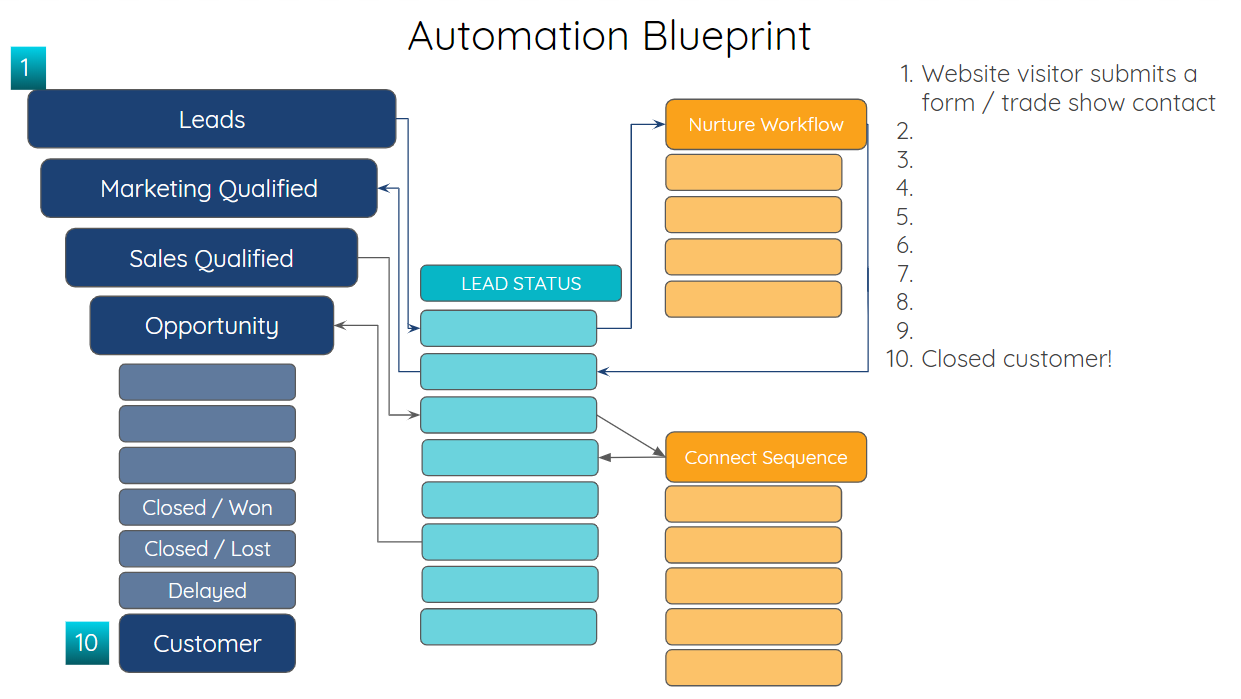
A new prospect hits your website. Their company is a perfect fit for your services, and you quickly reach out to make contact, but alas! The prospect is not yet ready to buy. This is the scenario facing companies and sales teams of all sizes, who find themselves with a pile of qualified leads who aren’t quite ready to make a purchase. Lead nurturing is the perfect tactic to engage this group of prospective customers until they’re ready to make a purchasing decision.
A lead nurturing campaign typically consists of a series of automated emails specifically designed to keep leads engaged with your company, nurturing them along their buying journey to becoming a customer. Orchestrated properly, lead nurturing establishes trust with your leads, positions your organization as a bona fide expert in your space, leads to warmer sales conversations, and, most importantly, closes more deals.
Lead nurturing is an extremely effective tactic for savvy sales and marketing teams. Consider, for example, the following statistics on lead nurturing:
- Leads who are effectively nurtured produce a 20% increase in sales opportunities. (Source: DemandGen)
- Effective lead nurturing generates 50% more sales-ready leads at a 33% lower cost. (Source: DemandGen)
- Nurtured leads make 47% larger purchases than non-nurtured leads. (Source: The Annuitas Group)
Here are five tips for building a lead nurturing strategy that connects with and engages your target audience so that you can hit your revenue goals.
Know your audience
The foundation of any effective lead nurturing campaign is strategy, and the foundation of any marketing strategy is understanding your target audience. You need to understand exactly who you’re trying to reach and what they care about most if you want to truly influence their behavior.
Create or update target buyer personas, and map their buying journey, including common pain points they experience or questions that they ask in the sales process. In your emails, you’ll want to speak directly to their pain points or answer their questions. This will help build trust and rapport.
Keep your audience in mind as you plan every detail of your lead nurturing campaign. Think through how they are likely to engage with your content, and always remember that they are real people on the receiving end of your emails. What challenges and pains are relevant to them?
When asking yourself hypothetical questions like, “is this too often to be emailing someone?” put yourself in their shoes and try to empathize with them. Knowing your audience also means being aware of subtle content consumption preferences, such as:
- Device type - do they tend to check email on their phone or computer?
- Read vs. skim - how closely do they read your emails?
- Email client - is most of your audience viewing your emails in Gmail? Outlook? Another program?
- Day of the week and time - busy executives often catch up on email Saturday mornings, while salespeople may check in during early weekday mornings
- Voice and tone - how casual or formal should your writing be in order to engage this audience?
- How busy are they? Typically, the higher up the chain your target audience, the less time and attention they will have to spend with your emails. Use this intelligence to tailor your outreach.
Provide value
A strong lead nurturing campaign includes emails that provide legitimate value to your prospects. Rarely, if ever, does this mean simply pestering your audience and repeatedly asking them to meet with your sales team. Even if you’re able to get some traction early on with this approach, audiences will quickly grow tired of your thinly veiled sales pitches, particularly when they can’t see much value in it for them.
Instead, leverage your brand’s content, website, and industry / subject matter expertise to truly provide something helpful to your audience. The most effective campaigns include a mix of content pieces including:
- Blog posts
- Videos
- Infographics
- Webinars
- Case studies
- Testimonials
- Brochures
- Meet with an expert
If your brand already has some content assets or blogs, start by conducting a content audit to determine which pieces are most relevant to your target audience. Evaluate content analytics to gauge which pieces are most interesting or engaging to readers, and start there. One pro tip - when sending your content as part of a lead nurturing campaign, it’s best to use ungated (no forms) content to minimize friction between a user and your content.
If your brand doesn’t have any relevant, valuable content, you need to create some for your lead nurturing campaign. You can start simple. It’s important to establish a mind set that the first nurture will be a building block, and you will learn what topics and tactics work and don’t work.
Use marketing automation
A lead nurturing campaign is best launched using marketing automation software. The customization, personalization, and analytics power really takes your lead nurturing campaign to the next level.

Customization
- Skip sending content to contacts who have already read a particular piece of content
- Send a separate follow-up prompt for a meeting based on engagement
- Send a follow-up email on a related topic when someone engages with one of your emails
- Notify your sales team the moment a lead opens or clicks an email
- Move leads through the revenue funnel or update their lead status and lifecycle stage
- Automatically create a deal or move it through pipeline stages
Personalization
- Segment based on persona or product interest
- Use tokens like first name, company, and industry
- Include regional or territory rep as the email sender
- Send emails based on recipient time zones
Analytics and Data
- Attribute sales to email nurtures with multi-touch attribution
- Score leads so that the sales team can properly prioritize their outreach
- A/B test emails automatically
- Determine high and low performing emails
Many marketing automation systems go further, allowing you to assign leads and notify sales team members based on engagement with your emails. For example, send a rep a text or a Slack message whenever an assigned prospect clicks three or more times, indicating a high level of engagement.
Using marketing automation software, you can build lead nurturing campaigns ranging from really simple to incredibly complex. The possibilities are endless!
Experiment
Data is at the heart of most effective marketing campaigns today, and lead nurturing is no exception. When developing your lead nurturing campaign, be sure to leave plenty of room to experiment in order to discover what works best to engage your specific audience.
Emails are ideal for A/B testing, meaning that you can try different versions of an email to your audience for testing. See if a question in the subject line will pique their interest. Include a button vs. an image. Test short and long form versions.
Be sure to utilize an experiment tracker to keep tabs on all of your experiments. We also recommend a scientific approach, starting with a hypothesis to guide each of your experiments. Accordingly, there is no such thing as a “bad” or “failed” experiment, as long as you learn and apply those findings to produce continuous improvement overtime.
Be sure to close out your experiments! Return to your hypotheses to confirm whether they were proven right or wrong. Then, be sure to take the data from your experiments and apply your learnings to future emails! This way, you can expect a steady stream of consistent improvement over time.
Always include a clear and specific CTA
Every single email you send should include a call-to-action button (CTA). The CTA should direct your user to take a specific next step such as
- Learn more
- Watch the video
- Download your guide
- Register now
- Continue reading
- Book a meeting
- Sign up
One clear CTA is best. Research has shown more than one can lead to decision paralysis.
Make sure that readers can find your CTA! Your CTA should stand out from the rest of your email, and it should be obvious that users are supposed to click the button as a next step. 1-3 short paragraphs of copy is usually plenty - you don’t need to tell a long story in an email.








